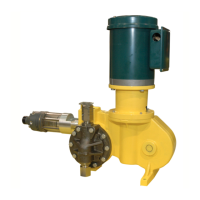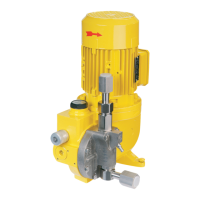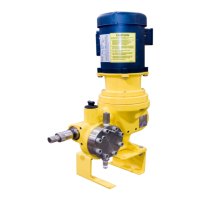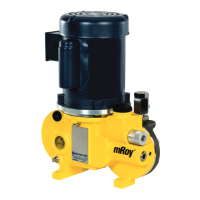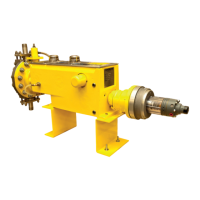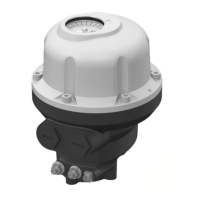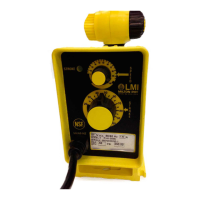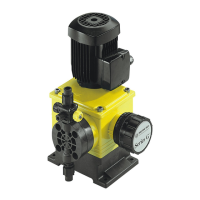35Installation, Operations & Maintenance Manual
SECTION 5 - TROUBLESHOOTING GUIDE
SYMPTOMS REMEDIES
Pump motor won’t operate. • No power. Supply correct power in accordance with motor
nameplate.
• Blown fuse. Check for short circuit or overload.
• Open thermal overload device in starter. Reset overload.
• Broken wire. Locate and repair.
• Low voltage. Check for too thin wiring.
• Low liquid level (where low level cutoff is used). Fill tank.
• Oil is frozen in pump. Thaw out.
• Bad motor. Replace motor.
Pump doesn’t deliver rated capacity. • Starved suction. Replace suction piping with larger size, or
increase suction head.
• Leaky suction piping. Repair or replace defective piping.
• Excessive suction lift. Rearrange equipment location to reduce
suction lift.
• Liquid too close to boiling point. Lower temperature or increase
suction pressure.
• Air in hydraulic or reagent system. Bleed system.
• Air or gas trapped in oil or pumpage. Decrease capacity to
20% for 5 mins. then increase to 100% for 5 mins.
• Worn or dirty valves or seats. Clean or replace cartridges.
• Viscosity of liquid too high (cps). Reduce viscosity by heating
or other means, or increase size of suction piping, or increase
suction pressure.
• Insoluble materials; crystallization of liquid; settling of solids.
Limit solution strength to proper value. Flush and clean solution
tank periodically. Suction connection should be 2” to 4”
from bottom of solution tank.
• Low discharge pressure. A minimum discharge pressure is
required to insure proper capacity control (see Discharge
Piping, Section II.)
• Relief valve being actuated. Refer to symptom marked with an
*.
• Capacity adjustment set above 100% capacity mark. Reposition
adjustment knob to 100% mark.
Pump delivers erratically. • Leaky suction line. Repair or replace piping.
• Worn or dirty valves or seats. Clean or replace cartridges.
• Excessive excursion of ball valves from seats (indicated by
ball chatter). Replace cartridges.
• Insufcient suction pressure. Increase suction pressure by
raising tank level or pressurizing suction tank.
• Liquid too close to boiling point. Reduce temperature or raise
suction pressure.
• Leaky system relief valve. Repair or replace relief valve.

